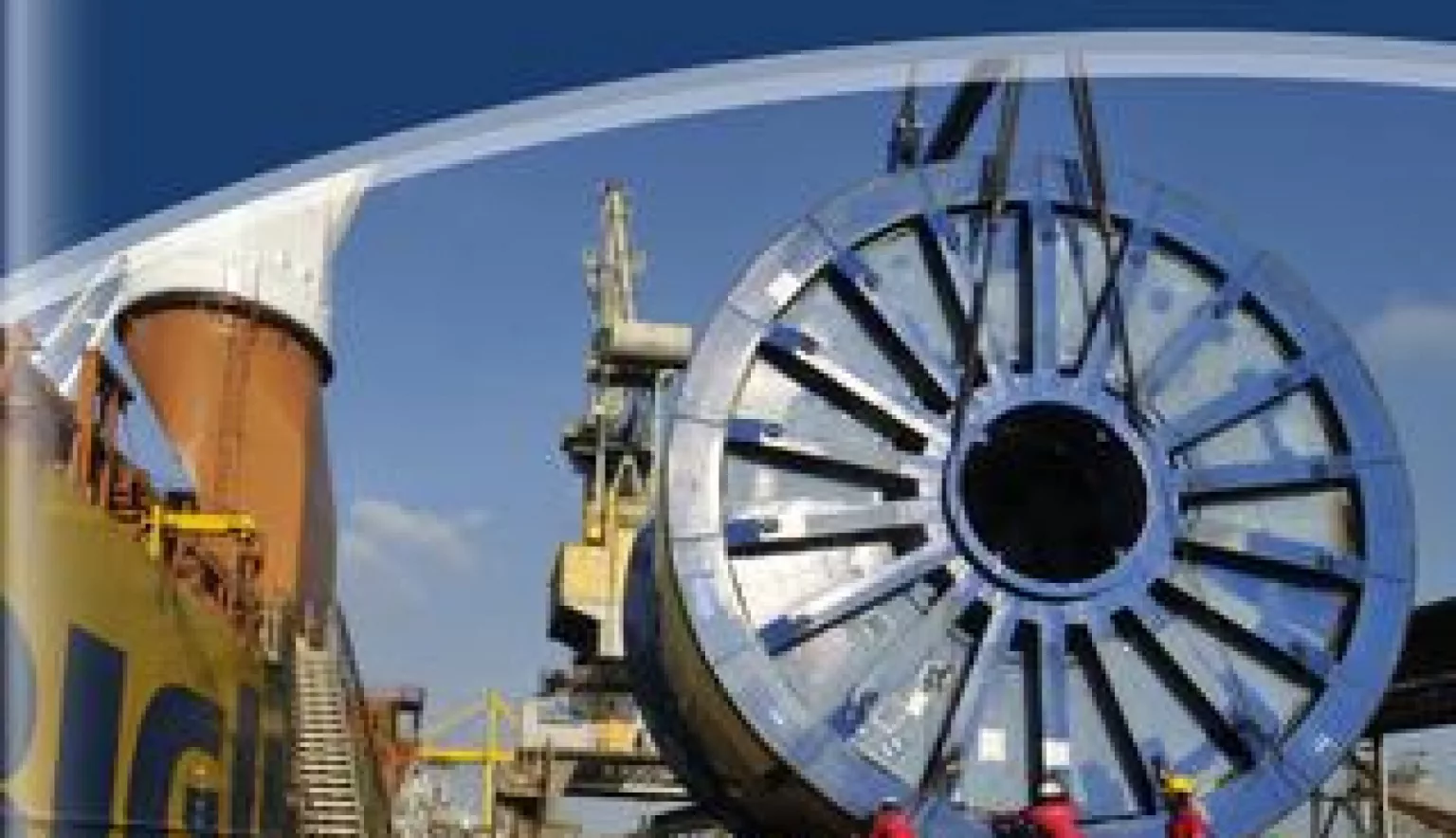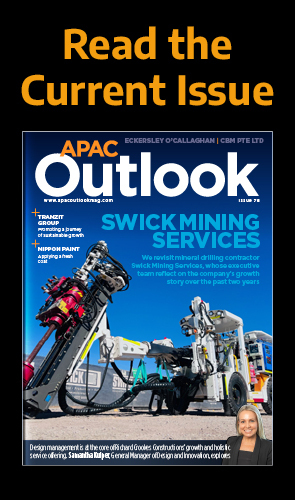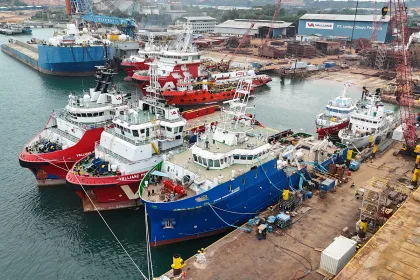The diversification of Johor Port over the past 40 years has been key to its regionally-significant standing and this ethos certainly remains true today as evidenced by its five-year development masterplan.
INTEGRATED LOGISTICS
Over the past 40 years, Johor Port has developed its remit, offering, site and mission in line with the latest requirements and trends in order to be one of the most efficient and integrated multi-purpose ports in the region.
Since inception in 1977, it has served Malaysia proudly and effectively; initially as the largest palm oil terminal in the world and as a gateway into the Johor region, before expanding over the course of numerous development phases to reach the level it can boast today.
Current services comprise break and break-bulk, edible and non-edible liquids, container operations and integrated logistics; a testament to its role as the only port in Johor to cover the full range of disciplines for practically all types of cargoes.
Chief Executive Officer, Shahrull Allam Shah recalls: “Our breakthrough came upon the commencement of Phase I development focusing on the break bulk terminal and liquid edible jetty operations. This development has been the catalyst for the palm oil industries that use Johor Port as their gateway to various parts of the world. Since then, Johor Port has been serving the Pasir Gudang Industrial Area as their main gateway for import and export and is now the largest palm oil terminal in the world.”
Subsequently attaining Free Zone status in 1984, Phase II focused on the dry bulk and non-edible liquid jetty, before Phase III addressed container terminal operations; ultimately leading to the privatisation of the port in 1995. Later, in 2004, Johor Port became certified as an approved London Metal Exchange delivery point and is currently ranked sixth in the world in terms of tonnage handled.
“With the completion of the entire Port Development, Johor Port now has a total area of 1,000 acres, 660 acres of which is in a Free Zone and 24 berths with a total berthing length of 4.9 kilometres together with warehousing space of close to 200,000 square metres and able to handle up to 40 million tonnes of cargo on a yearly basis,” Shahrull explains. “Our current capacity allows us to cater for 1.2 million TEUs of container handling capacity each year, 12 million tonnes of liquid handling capacity a year, and 10 million tonnes of break bulk cargo handling capacity a year.
As a testament to the Port’s continuous improvement, Johor Port was awarded with a number of prestigious awards which include the “Anugerah Kecemerlangan Industri 2016”, the highest award in recognition of industrial excellence practice; Bulk Liquid Port/Terminal of the Year 2017 by Global Ports Forum; and Multi-Purpose Port Operator of the Year 2017 by Forest & Sullivan,
“As of today, Johor Port Berhad remains the world’s largest palm oil terminal and is the Southern Gateway’s Multipurpose Port in Malaysia with ISO-Certified status; venturing beyond traditional port operations.”
PORT DEVELOPMENT MASTERPLAN
Over the years, Johor Port has evolved and expanded its offering from core port services into a host of diversified services which include warehousing, port training services, offshore inspection, maintenance and repair, marine services and integrated supply chain solutions.
As such, the facility continues to meet its goal of playing a key role in the development of the Pasir Gudang Industrial Area and the Tanjung Langsat Industrial Estate.
“As for the future development of Johor Port itself, the port, through its concessionaire, Johor Port Berhad (JPB) realised the need to be dynamic and enhance its business landscape by not just limiting its activities to conventional seaport businesses and to develop a more entrepreneurial approach towards the expansion of its port services, logistics services as well as its liquid tank and storage business,” Shahrull continues. “In view of this, in 2013, Johor Port embarked on realising a five-year Port Development Masterplan. The main thrust of the masterplan focused on volume growth, capacity building and business diversification.”
Customer retention has been a pivotal pillar behind this strategy, compounded by a set of initiatives geared towards Port enhancements, operational efficiencies and improved productivity.
Shahrull continues: “In this respect ageing cranes have been replaced and current infrastructures and facilities have been improved with new warehouses being built. In addition, the restructuring of the Port’s existing spaces via a space optimisation plan is underway and the strategic initiative to merge existing warehouses has been completed. With an investment of more than RM500 million over the next five years, this entire exercise is expected to push existing business to above normal revenue growth figures.”
The overall strategy for capacity building has been simultaneously supported by numerous port expansion initiatives which will see a restructuring of the existing container terminal with new on-dock facility, the development of Johor Port Terminal 2 with Free Zone status, the development of an Offshore Inspection, Maintenance & Repair Centre (“OIMR” Centre) and the development of an Export Processing Zone in Tanjung Langsat.
“The business diversification initiatives involve strategic business collaborations to further improve revenue and reduce dependence on organic growth and the current business model,” Shahrull emphasises.
PERFORMANCE ENHANCEMENT
Given the current climate of globalisation and competition, port performance is of major importance for port competitiveness, and improvements in port management, facilities and operations have become equally critical.
“One way of increasing effective port capacity is through technological and operational innovations within Johor Port itself,” Shahrull states, in alluding towards equipment upgrades, a heavier reliance on advanced technologies and an overall increase in throughput across the Port’s facilities.
“In view of this, JPB has also embarked on a port performance enhancement programme to improve current productivity. This will ensure faster vessel turnaround and create additional capacity for the Port to induce more cargo throughput.”
As much as RM400 million will be spent over the next five years to meet these ambitions; consequently, enhancing every single strand of the overall service compliment.
In doing so Johor Port is better aligning itself not just to the needs of Johor and Malaysia but also to its advantageous neighbours; Singapore and Indonesia.
“Looking at these two countries in term of economic growth, both are enjoying a positive GDP increase. In view of this, we are constantly monitoring the regional development, particularly in the area of port expansion and services provided by them. This will ensure that Johor Port continues to improve its operational efficiency and at the same time be innovative in our development.”
EXCELLENT CONNECTIVITY
The need for utmost customer satisfaction derives from Johor Port’s responsibility as a regional commodity hub and over the years it has successfully attracted various, sector-leading players involved in areas of trading, warehousing and processing.
Everything from cocoa, coffee, palm oil, coal, steel and aluminium – and most things in between – have been catered for via the Port’s flexible facilities; contributing to Johor’s globally-recognised status in both soft and hard commodity exchanges.
Shahrull notes: “As a regional commodity hub, Johor Port is: the world’s largest palm oil/edible oil terminal; one of the largest hubs in the region for non-ferrous metals as an LME location; one of the largest discharging points of rice and cocoa in Malaysia; one of the biggest terminals in Malaysia for fertiliser and cement; one of the preferred ports in the region for offshore, inspection, maintenance & repair (OIMR) activities; and a designated delivery point under LME, CME/KLCI, APEX and PLATTS.”
Johor Port’s national and international acclaim is hardly surprising given its more than two million square feet of warehousing space; a number that is set to grow once again in the years to come in line with further investments to ensure continued customer satisfaction across the board.
“Through our five-year Port Development Masterplan, we will continuously improve the range of services that we can offer to all of our current and future customers and this includes not only depending on traditional port business, but also diversifying our services into non-traditional port services as a means to improve our overall revenue and to be able to accommodate the market’s needs,” Shahrull concludes. “We have a focused objective that we want to achieve where Johor Port will be able to double its handling capacity from the current 40 million tonnes a year to 80 million tonnes per annum while at the same time creating a virtual terminal to create seamless logistics connectivity between us and all industrial areas.
“Within the next five years, with all the initiatives that we have put in place, Johor Port will be able to expand our output connectivity and our presence within the region. But for now, with our excellent feeder connectivity, Johor Port remains the premier Southern Gateway, Multi-purpose Port in Malaysia and will continue to play a critical role in connecting ASEAN to the Intra Asia Region as well as being a Load Centre for Sabah & Sarawak, and the gateway for the Indonesian exports.”





































